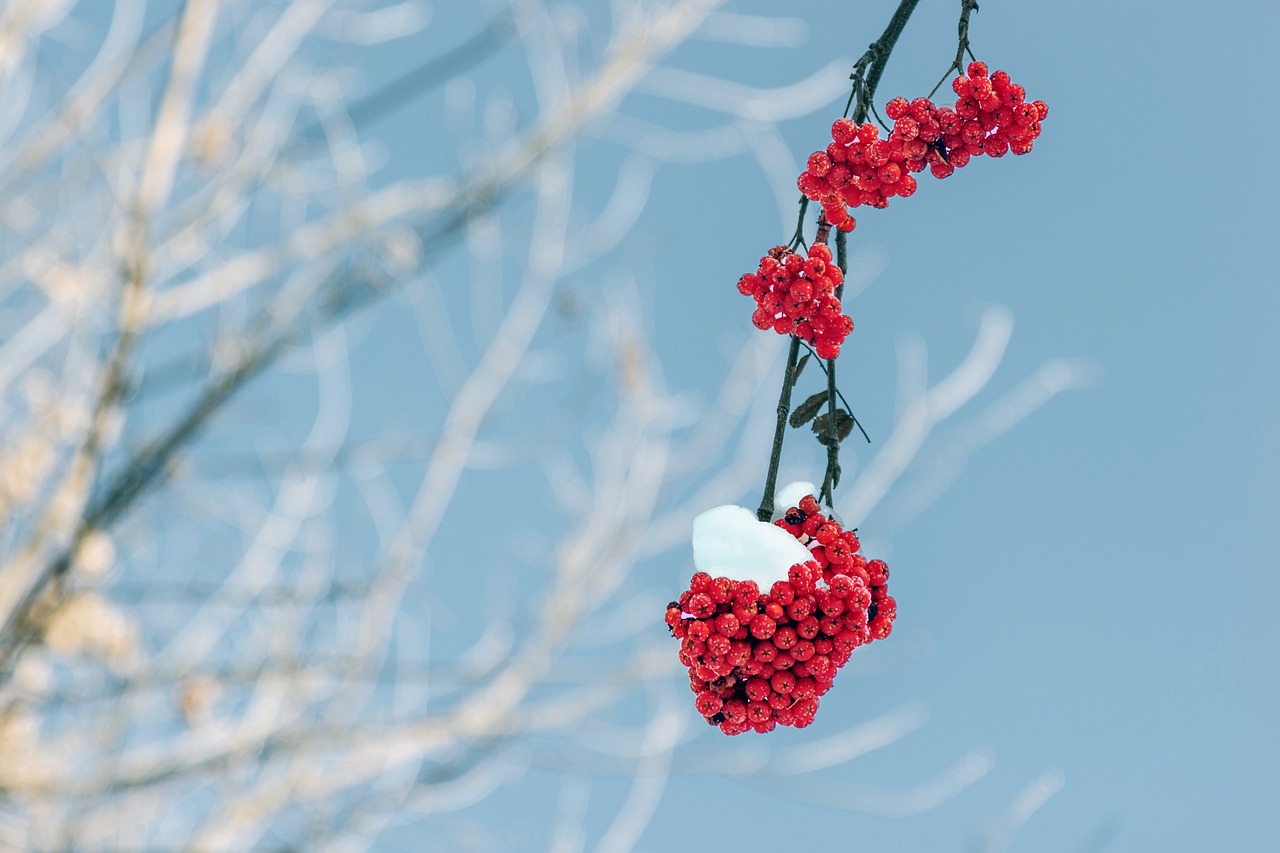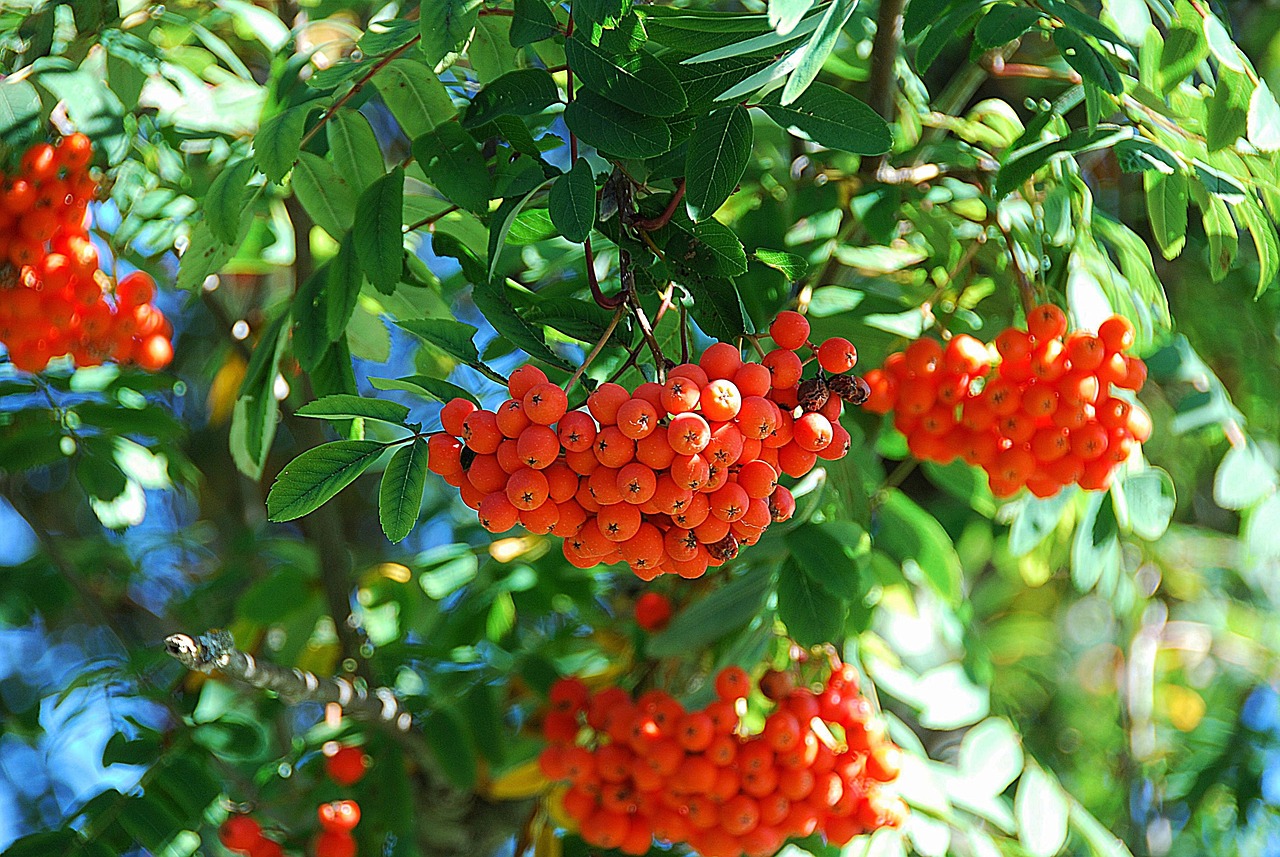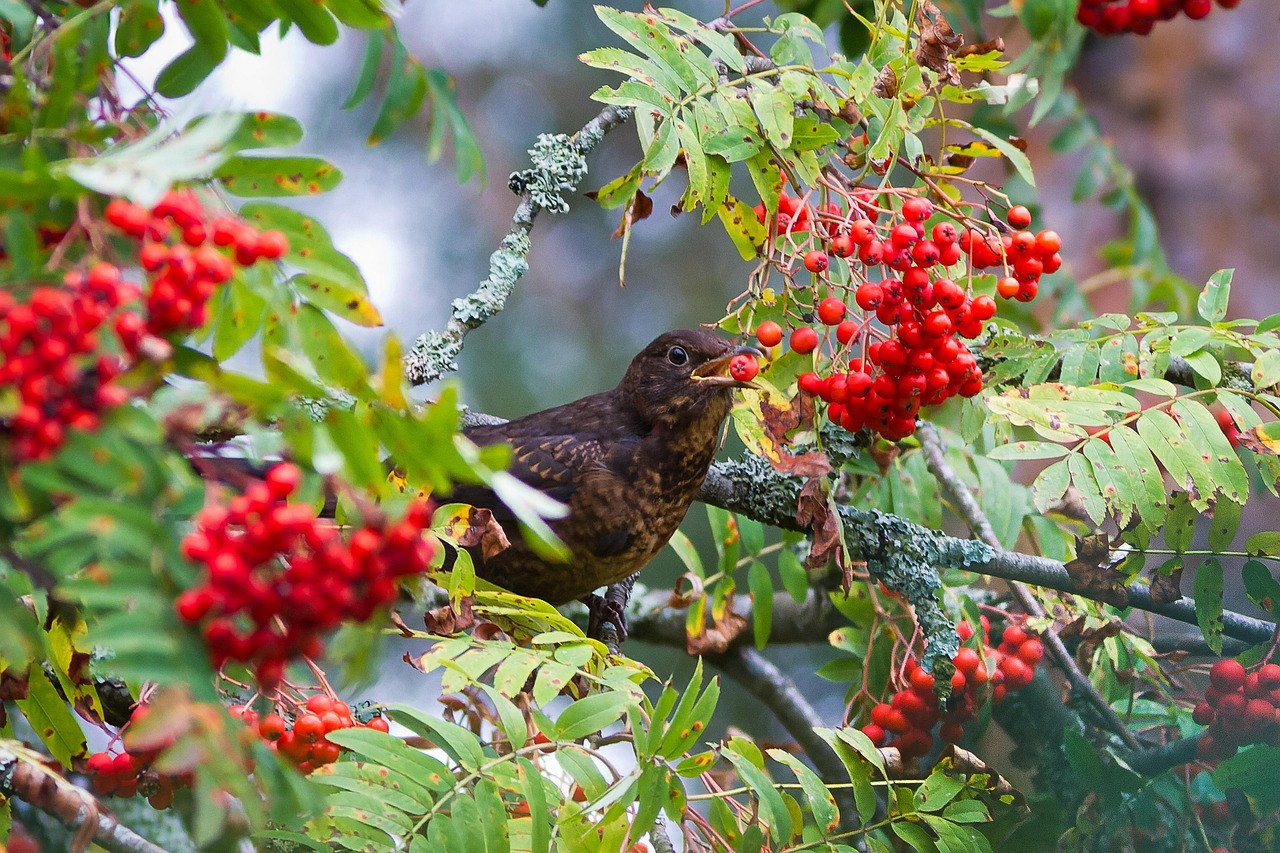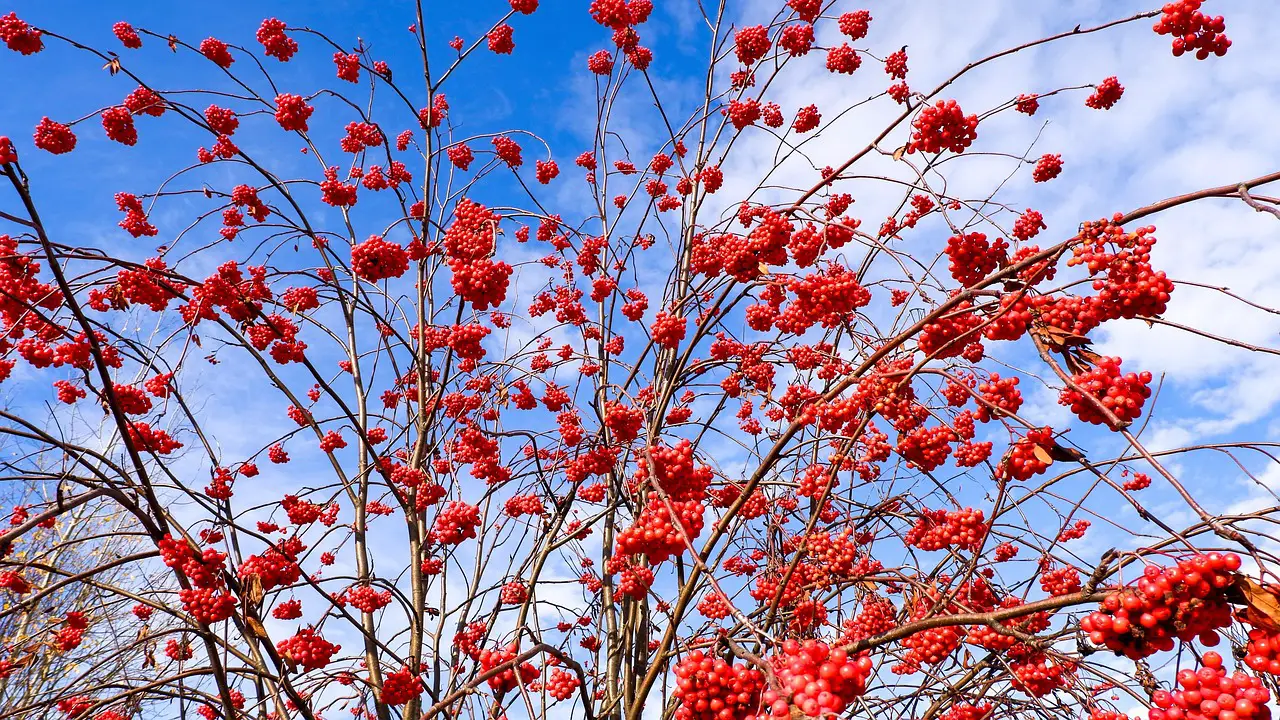The growth rate of a rowan tree in cool climate gardens typically ranges from 1 to 2 feet per year. Factors such as soil quality, water availability, and sunlight can influence this rate significantly.
Understanding Rowan Trees
The rowan tree, also known as the mountain ash, is scientifically classified as Sorbus aucuparia. This deciduous tree is native to Europe and parts of Asia. It is well-known for its striking clusters of bright red berries and its ability to thrive in cooler climates. The rowan tree is a popular choice for gardens, particularly in northern regions where temperatures can be low.

Rowan trees are appreciated not only for their beauty but also for their hardiness. They can tolerate poor soil conditions and are often used in reforestation projects. In addition to their aesthetic appeal, these trees play an important role in local ecosystems, providing food and shelter for various wildlife species.
Factors Affecting Growth Rate
The growth rate of rowan trees can vary due to several factors. Understanding these factors can help gardeners optimize their growth and health.
- Soil Quality: Rowan trees prefer well-drained, fertile soil. Poor soil conditions can slow down their growth.
- Water Availability: Consistent moisture is essential during the growing season. However, overwatering can lead to root rot.
- Sunlight: These trees thrive in full sun but can also tolerate partial shade. Insufficient sunlight can hinder their growth.
- Climate: As native plants of cooler regions, rowan trees perform best in climates with cold winters and moderate summers.
Growth Rate Characteristics
The rowan tree exhibits specific growth characteristics that are important for gardeners to understand. Typically, these trees reach a mature height of 15 to 30 feet, depending on growing conditions. The following table summarizes key growth characteristics:

| Characteristic | Description |
|---|---|
| Average Height | 15 to 30 feet |
| Spread | 10 to 20 feet |
| Growth Rate | 1 to 2 feet per year |
| Life Span | Up to 100 years |
Rowan trees are generally slow growers in their early years, but once established, they can experience a surge in growth. This period often occurs after about five years of planting when the tree has developed a strong root system.
Planting and Care Tips
To ensure optimal growth rates, proper planting and care are critical. Here are some practical tips for cultivating rowan trees in cool climate gardens:
- Select the Right Location: Choose a spot that receives full sun for at least six hours a day.
- Prepare the Soil: Amend the soil with organic matter to improve fertility and drainage.
- Water Wisely: Water the tree deeply but infrequently to encourage deep root development.
- Mulch: Apply mulch around the base to retain moisture and suppress weeds.
- Prune Regularly: Prune young trees to shape them and remove any dead or crossing branches.
Following these guidelines will help your rowan tree establish itself and achieve its potential growth rate in your garden.

Pests and Diseases
Being informed about potential pests and diseases will also contribute to the healthy growth of rowan trees. Common issues include:
- Pests: Aphids and caterpillars may target new growth.
- Diseases: Fungal infections can affect leaves and branches, particularly in humid conditions.
Regular monitoring and timely intervention can prevent these issues from affecting your tree’s growth rate. With proper care, rowan trees can thrive and provide beauty and ecological benefits to your cool climate garden.
Propagation Methods for Rowan Trees
Understanding how to propagate rowan trees is essential for gardeners looking to expand their collection. There are several methods of propagation that can be employed, each with its own advantages and challenges.

Seed Propagation
One of the most common methods to propagate rowan trees is through seeds. This process requires patience, as it can take time for seeds to germinate and establish.
- Seed Collection: Collect ripe berries in the fall when they are bright red. Remove the seeds from the berries.
- Stratification: Soak the seeds in water for 24 hours, then place them in a moist medium such as sand or peat. Store them in a refrigerator for about 60 days to mimic winter conditions.
- Sowing: After stratification, plant the seeds in well-draining soil, covering them lightly. Keep the soil consistently moist.
Germination may occur in spring. This method allows for a diverse genetic range in the resulting plants.
Cuttings
Another effective way to propagate rowan trees is through cuttings. This method can yield faster results compared to seed propagation.
- Choosing Cuttings: Select healthy, semi-hardwood cuttings from a mature tree during late summer or early fall.
- Treatment: Dip the cut end of the cutting in rooting hormone to promote root development.
- Planting: Place the cutting in a pot filled with moist potting soil. Cover it with a plastic bag or a propagator to maintain humidity.
The cuttings should develop roots within a few weeks, at which point they can be gradually acclimated to outdoor conditions before transplanting.
Environmental Requirements
Rowan trees thrive best under specific environmental conditions. Understanding these requirements can help ensure successful growth and development.
Climate Preferences
Rowan trees are particularly well-suited for cool climates. They prefer regions with:
- Cold Winters: These trees require a period of dormancy during cold months to promote healthy growth in spring.
- Mild Summers: Hot, dry summers can stress young trees and inhibit growth.
Soil Conditions
The ideal soil for rowan trees should be:
- Well-Drained: Good drainage is essential to prevent root rot.
- Rich in Organic Matter: A fertile soil environment supports healthy growth.
- Neutral to Slightly Acidic pH: Rowan trees prefer a pH range of 6.0 to 7.0.
Cultural Significance of Rowan Trees
The rowan tree holds cultural significance in various societies. It is often associated with protection and has been revered in folklore and mythology throughout history.
- Celtic Beliefs: In Celtic mythology, rowan trees were considered sacred and were believed to ward off evil spirits.
- Folklore: Many cultures have used rowan wood for crafting protective charms and talismans.
- Culinary Uses: The berries are edible but are typically processed into jams or jellies due to their tartness.
This cultural importance adds another dimension to the appeal of rowan trees in gardens, as they not only provide beauty but also connect gardeners to rich traditions and histories.
Wildlife Benefits
Rowan trees are not only valuable for aesthetic and cultural reasons; they also play an important ecological role. The trees provide numerous benefits to local wildlife.
- Biodiversity: The flowers attract various pollinators, including bees and butterflies.
- Food Source: The bright red berries serve as food for birds and other wildlife during the colder months when resources are scarce.
- Nesting Sites: The tree’s branches offer shelter for birds looking for safe nesting sites.
By planting rowan trees, gardeners contribute positively to local ecosystems while enjoying the many benefits these trees provide.
Rowan Tree Varieties
There are several varieties of rowan trees, each with unique characteristics that can influence their growth rates and suitability for different garden settings. Understanding these varieties can help gardeners select the best option for their cool climate gardens.
Common Rowan Varieties
The following are popular varieties of rowan trees that are well-suited for cooler climates:
- Sorbus aucuparia: This is the most common rowan tree, known for its vibrant red berries and attractive foliage. It typically reaches heights of 15 to 30 feet.
- Sorbus intermedia: Known as the Swedish rowan, it features a more compact growth habit and is often used in smaller gardens. Its height ranges from 10 to 20 feet.
- Sorbus domestica: Commonly called the service tree, this variety produces larger berries that are edible and can be used in culinary applications.
Growth Rate Differences
Different varieties of rowan trees can exhibit varying growth rates. Factors such as genetic differences and environmental conditions contribute to this variability.
| Variety | Average Height | Growth Rate |
|---|---|---|
| Sorbus aucuparia | 15 to 30 feet | 1 to 2 feet per year |
| Sorbus intermedia | 10 to 20 feet | 1 to 1.5 feet per year |
| Sorbus domestica | 20 to 40 feet | 2 to 3 feet per year |
Selecting the right variety based on growth rate and size considerations can lead to a more successful planting experience in your garden.
Seasonal Care for Rowan Trees
To ensure optimal growth and health, seasonal care is essential for rowan trees. Each season presents unique challenges and opportunities for care.
Spring Care
Spring is a crucial time for rowan trees as they emerge from dormancy. Key care tips include:
- Fertilizing: Apply a balanced fertilizer to encourage new growth. Look for fertilizers high in nitrogen.
- Pruning: Conduct any necessary pruning to shape the tree and remove dead or damaged branches.
- Watering: Ensure the tree receives adequate water, especially if there has been little rain.
Summer Care
During the summer months, attention shifts to maintaining moisture levels and monitoring pests:
- Mulching: Apply mulch to retain soil moisture and suppress weeds.
- Pest Monitoring: Regularly check for signs of pests such as aphids or caterpillars. Early intervention is key to preventing damage.
- Irrigation: Water deeply during dry spells, especially for young trees.
Autumn Care
As autumn approaches, preparation for winter becomes important:
- Berry Harvesting: If applicable, harvest berries for culinary use or leave them for wildlife.
- Soil Preparation: Consider adding compost or organic matter to improve soil fertility for the next growing season.
- Protection: Wrap young trees with burlap or protective wraps to guard against harsh winter winds.
Winter Care
Winter care focuses on protecting the tree during its dormant phase:
- Irrigation: Water the tree before the ground freezes if there is a prolonged dry spell in late fall.
- Inspection: Regularly check for damage from snow or ice accumulation, and clear any heavy loads off branches if necessary.
- Pest Control: Look for signs of pests that may overwinter on the tree and take appropriate action.
Nutritional Needs of Rowan Trees
The nutritional needs of rowan trees play a significant role in their overall health and growth rate. Understanding these needs can help ensure optimal development.
Essential Nutrients
Rowan trees require several key nutrients for healthy growth. The following list outlines these essential nutrients:
- Nitrogen: Promotes vigorous growth and leaf development.
- Phosphorus: Supports root development and flowering.
- Potassium: Enhances overall health and resistance to disease.
Soil Testing
Before applying fertilizers, it is advisable to conduct a soil test. This test will provide insights into existing nutrient levels and pH balance, allowing for tailored fertilization practices that meet the specific needs of your rowan trees.
By understanding the various factors affecting rowan tree growth rates, including propagation methods, seasonal care, and nutritional needs, gardeners can cultivate healthy trees that thrive in cool climate gardens.
Challenges in Rowan Tree Cultivation
While rowan trees are generally hardy and adaptable, there are challenges that gardeners may encounter during their cultivation. Understanding these challenges can help in developing effective strategies for managing them.
Climate Extremes
Rowan trees thrive in cool climates, but extreme weather conditions can stress them. Here are some potential climate challenges:
- Late Frosts: Late spring frosts can damage new buds and flowers, impacting fruit production.
- Heavy Snowfall: Accumulation of snow on branches can lead to breakage, especially in young trees with flexible branches.
- Drought Conditions: Extended periods without rain can stress the tree, leading to slower growth and increased susceptibility to pests.
Pest Management
Effective pest management is essential for maintaining healthy rowan trees. Some common pests include:
- Aphids: These small insects can weaken the tree by sucking sap. Regular monitoring and use of insecticidal soap can help control infestations.
- Scale Insects: They attach to branches and leaves, leading to yellowing and leaf drop. Horticultural oil can be an effective treatment.
- Caterpillars: Certain caterpillars may feed on leaves, causing significant damage. Handpicking or using organic pesticides can mitigate their impact.
Disease Management
Rowan trees can also be susceptible to various diseases. Some common diseases include:
- Powdery Mildew: This fungal disease appears as a white powder on leaves. Good air circulation and removing infected foliage can help prevent its spread.
- Fire Blight: A bacterial disease that causes wilting and dieback. Promptly removing infected branches is critical to manage this disease.
- Leaf Spot: Caused by fungal pathogens, leaf spot results in dark spots on leaves. Proper spacing and sanitation can reduce the risk of infection.
Rowan Trees in Landscaping
In addition to their ecological and cultural significance, rowan trees are valuable assets in landscape design. Their aesthetic qualities make them a popular choice for various garden settings.
Aesthetic Appeal
The rowan tree offers year-round beauty with its seasonal changes:
- Spring: Delicate white flowers bloom, attracting pollinators.
- Summer: Lush green foliage provides a vibrant backdrop.
- Autumn: Bright red berries and colorful foliage create stunning fall displays.
- Winter: The tree’s structure remains attractive even after leaf drop, providing visual interest.
Design Versatility
Rowan trees can serve multiple roles in landscape design:
- Specimen Trees: Their unique shape and color make them ideal focal points in gardens.
- Windbreaks: Planting rowan trees as a windbreak can help protect more delicate plants from harsh winter winds.
- Wildlife Gardens: Incorporating rowan trees into wildlife-friendly gardens encourages biodiversity and supports local ecosystems.
Final Thoughts
The rowan tree stands out as a valuable addition to cool climate gardens, offering numerous benefits ranging from ecological contributions to aesthetic appeal. Understanding its growth rate, care requirements, and potential challenges will empower gardeners to cultivate these beautiful trees successfully.
The versatility of rowan trees makes them suitable for various landscaping applications, whether as a specimen tree, part of a wildlife habitat, or a charming addition to a garden setting. By investing time and effort into their care, gardeners can enjoy the many rewards that rowan trees provide, including stunning seasonal displays and support for local wildlife.
Ultimately, the beauty and resilience of the rowan tree make it a worthwhile choice for gardeners seeking to enhance their landscapes while contributing positively to the environment. With the right knowledge and practices, rowan trees can thrive and flourish, becoming cherished elements of cool climate gardens for generations to come.
